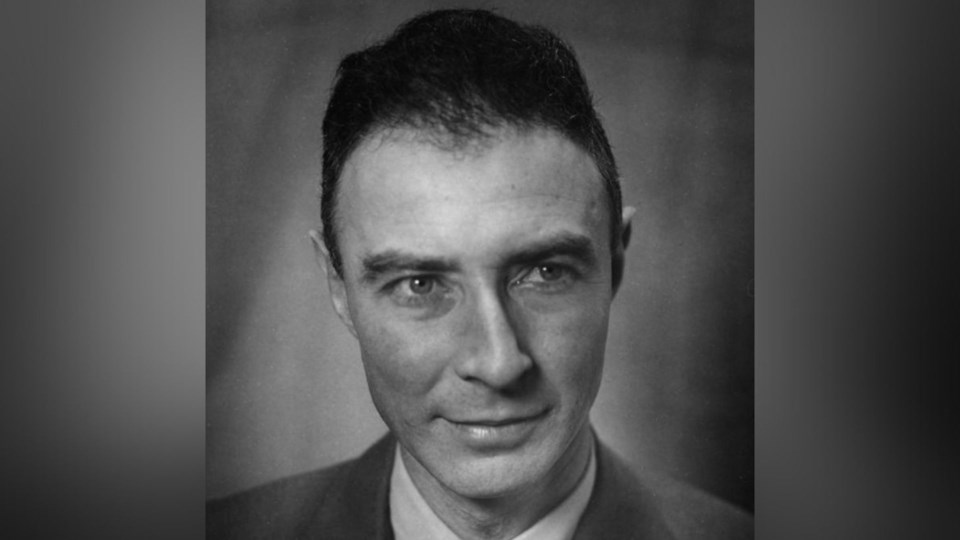The late Ernie Mason of Trail, B.C., liked to say Aug. 6, 1945 was the day his hair went grey.
Not coincidentally, it was the day the atomic bomb was dropped on Hiroshima.
It was on that day that Mason and his colleagues were told what the top-secret project they had been working on was about.
The story of the development of the weapons that brought about the end of the Second World War in the Pacific and led to the Japanese surrender is now back in the news.
It’s told in the new film Oppenheimer, starring Cillian Murphy. It's a biopic of American theoretical physicist and director of the Los Alamos Laboratory Robert J. Oppenheimer, known as the father of the atomic bomb. That laboratory was in New Mexico.
Mason said the heavy water he and his colleagues made was not used in the bombs dropped on Hiroshima and Nagasaki three days later.
It was, however, used in the Trinity test at Alamogordo Bombing and Gunnery Range in New Mexico on July 6, 1945, the plutonium bomb that was the world’s first atomic blast. It was the device known to U.S. President Harry S. Truman as ‘the gadget.’
Mason had been tasked with being chief design engineer on a project to make heavy water. The man who handed him the task was Selwyn Blaylock on a project known as P9.
“Somebody whispered in my ear about what we were doing: ‘It’s something that’s equivalent to 20,000 tons of TNT,’” Mason told this reporter for the Trail Daily Times in July 1990.
“A railroad car carries about 40 tons and it’s about 40 feet long so it’s a train about 20,000 feet long,” said Mason, then 95.
It was the only interview Mason gave on the project, wondering aloud if he was violating an oath of secrecy made decades earlier.
He was under watch by the FBI and his house was routinely searched.
Still, a commendation for his work from then U.S. Secretary of War hung in his Trail home — although hidden by the TV. Another such commendation hangs in the Trail museum.
In his 2015 paper on the project — "Blaylock’s Bomb: How a Small B.C. City Helped Create the World’s First Weapon of Mass Destruction" — historian Ron Verzuh notes his colleague Brian L. Villa highlighted Trail’s role in an essay on the atomic weapon collaboration, saying, “curiously enough, only one component [of the American bomb development program] was left to be built outside of the United States, the heavy water plant at Trail.”
Mason’s assignment came three years after negotiations with the United States with a 1942 agreement with Consolidated Mining and Smelting (C.M. & S. — now Teck Resources Ltd.), to produce heavy water for the Manhattan Project.
The Manhattan Project focused on creating nuclear fission by either separating U-235 (an isotope of uranium) out from the more commonly found U-238 or using U-238 to make plutonium. When heavy water is applied to U-238, it undergoes fission. There, a neutron slams into a larger atom, causing it to split into two smaller atoms. That causes a chain reaction; when each atom splits, a large amount of energy is released.
Engineers soon arrived from Standard Oil Development and began work on a dark tower that dominated a C.M. & S. plant on a hill above Trail for decades. It has been demolished since Mason gave his interview.
Mason and Dr. C.H. Wright were told to find out how to make heavy water and met with the Standard Oil Development engineers in San Francisco.
“They were making heavy water, probably the only plant in existence,” Mason said, adding the only others making it would have been small producers at universities.
He explained the complicated process. “Instead of H2O, you get H4O. It’s two extra elements of hydrogen.”
But, he stressed, the project was of such extreme secrecy that individuals did not know what jobs others were working on so pieces could not be put together on what the project was about. The day shift would not know what the night shift was doing and vice versa.
“The fellas who were working had an idea they were working on something very import but it’s funny, I never worried about what the hell it was for,” Mason told the Trail Daily Times. “I just had a job to do. I had to see that it got done.”
And, he said, “We also knew the Nazis were working overtime in Norway to produce this stuff.”
Editor's note: Reporter Jeremy Hainsworth grew up next door to Blaylock’s Trail house.



